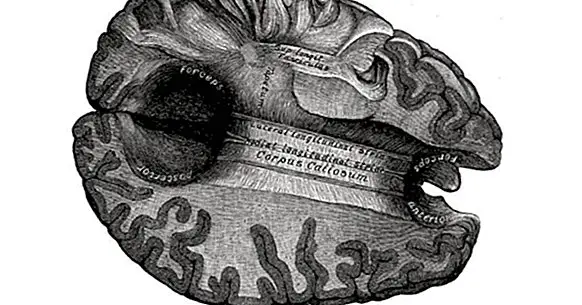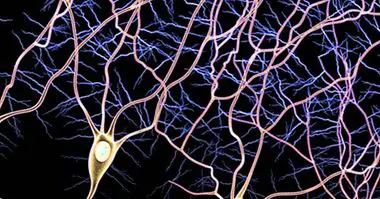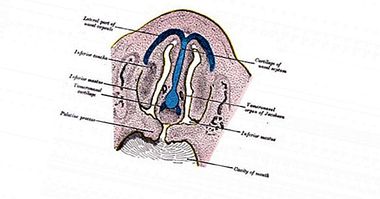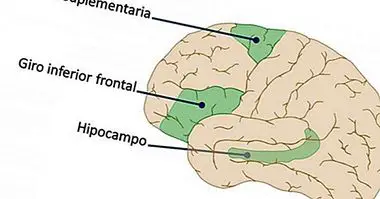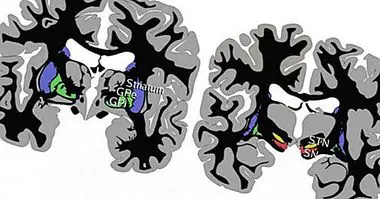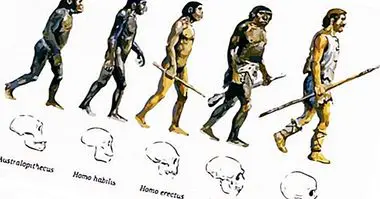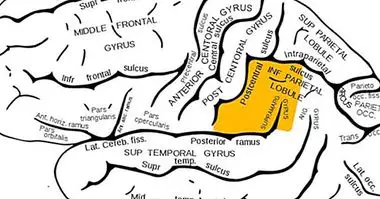Corpus callosum of the brain: structure and functions
Let's think for a moment about a human brain. It is a structure of great complexity in which the existence of two clearly differentiated parts is perceived, the two cerebral hemispheres.
We also know that each of these hemispheres has some more specialized functions in different aspects , for example by finding speech in the left hemisphere (usually) or having seen that while the right hemisphere is more holistic or global the left hemisphere is more logical and analytical. But nevertheless, these two hemispheres are not loose and separated between them , but at some point in the anatomy of the brain it is possible to find a point of union. This point of union is the so-called corpus callosum .
What is the corpus callosum?
It is called corpus callosum to the set of nerve fibers that unites both cerebral hemispheres. This structure It is mainly formed by neuronal axons coated with myelin, which are part of the white matter of the brain. Within the white substance the corpus callosum is considered an interhemispheric commissure, since it connects and exchanges information between structures of the different hemispheres.
This structure is located in the midline of the brain, situating itself in the interhemispheric fissure and being mostly hidden from external observation when it is partially covered by the cortex. It has a leaf or comma shape, having different parts that connect different parts of the brain to each other .
The areas connected by this structure of the encephalon are mostly cortical areas, albeit with some exceptions. Usually the subcortical structures communicated with other structures and commissures.
Parts of the corpus callosum
While the corpus callosum is considered a single structure, it has traditionally been divided into several parts. Specifically, the corpus callosum could be divided into the following four sections .
1. Peak or rostrum
Located in the lower frontal part of the corpus callosum, it is the most anterior part of this structure. It is born from the terminal lamina and is connected to the optic chiasm.
2. Genu or knee
It is the part of the corpus callosum that it curves into the brain , going before to the frontal lobes to form in smaller forceps. The fibers of this part of the corpus callosum they connect the prefrontal cortices of the two hemispheres, allowing their information to be integrated .
3. Body
After the genu or knee, the body is found, which ends up thickening in its back. It connects with the septum and the trine This, in turn, is an important connection structure between regions of the brain, such as the thalamus, the hippocampus and other areas of the limbic system.
4. Splenius or runner
The most posterior and final part of the corpus callosum is formed by the fibers of which they end up associating with other projection and associative fibers. It connects with the occipital lobe to form the greater forceps, and also is linked to the lateral ventricle to the point of forming one of its lower walls . It also connects with the pineal gland and the habenular commissure (which connects the habenular nuclei of both hemispheres).
Functions of this part of the brain
The main function of the corpus callosum is to transmit information from one hemisphere to another , allowing interhemispheric communication. In this way the fact that the functions of each of the hemispheres is partly different does not prevent them from acting as an integrated whole, allowing the precise execution of the different processes and actions carried out by the human being.
In this sense also is linked to learning and information processing , to unite and act as a link between the different brain nuclei. On the other hand, if for example a part of a cerebral hemisphere is injured, thanks to the corpus callosum the opposite hemisphere can take care of those functions that are left unattended.
In addition, some studies show that, apart from this function, the corpus callosum also influences the vision, specifically in the eye movement , to be transmitted through him the information on the muscles of the eye. It is natural, since in the ocular movements it is crucial the coordination between the two hemibodies, in this case the eyes.
What happens when it is sectioned?
The corpus callosum is an important structure when it comes to integrating the information received and processed by both cerebral hemispheres. Although the absence of connection between hemispheres at the corpus callosum level does not imply a complete loss of functionality (since Although it is the main interhemispheric commissure, it is not the only ), the total or partial disconnection of the cerebral hemispheres can suppose an important handicap for the accomplishment of diverse activities.
Among other things, this kind of disconnection between parts of the brain can give way to what is known as Callose disconnection syndrome .
In this syndrome we have seen how patients with divided brain (that is, they present a disconnection between both hemispheres) have shown difficulties such as lack of coordination, repetition or perseveration when carrying out sequenced activities how to comb, feed or dress, sometimes doing the same action twice due to lack of motor integration.
As well greatly hinders the learning and retention of new information not being able to coordinate information correctly (although it does not preclude it, it requires much more effort than usual), as well as it can cause alexia (inability to read) and agraphy (inability to write).
In addition, significant changes can occur at the sensory level. For example, it has been shown that Posterior injuries of the corpus callosum can cause severe difficulties to perform discriminations between somatic stimuli , causing somatic agnosias or lack of recognition from tactile stimuli. Memory and language problems are also common.
Callosotomy: when sectioning the corpus callosum can be good
Despite the disadvantages that this kind of surgical interventions may involve, in the presence of some very serious disorders, the division of the corpus callosum or callosotomy has been evaluated and successfully applied for medical purposes, as a lesser evil.
The most typical example is that of resistant epilepsy , in which the sectioning of parts of the corpus callosum is used as a method of reducing severe epileptic seizures, preventing epileptoid impulses from traveling from one hemisphere to another. Despite the problems it can cause on its own, callosotomy increases the quality of life of these patients, due to the fact that the difficulties that can cause are smaller than those that produce the continuous seizures , which reduces the risk of death and the quality of life can improve.
Conditions that affect the corpus callosum
It has been indicated previously that the division of the corpus callosum can have limiting effects, although occasionally its section can be considered in order to improve the symptomatology of some disorder. But nevertheless, that the corpus callosum is cut or damaged can occur in an accidental or natural way , existing multiple diseases that can affect this area of the brain. Some of these alterations can occur from the following.
1. Cranioencephalic traumatisms
In the event of a blow or trauma, the corpus callosum can be easily damaged due mainly to its great consistency and density. Usually a tear of the substance occurs or a diffuse axonal damage as a result of the kick-kick against the bones of the skull. If we talk about effects focused on a point, the greatest affectation is usually given in splenium.
2. Cerebrovascular accidents
Although it is not frequent due to the bilateral irrigation of the corpus callosum, it is possible to find cases in which haemorrhages or ischemia produce an affectation of the white matter of the corpus callosum . In this way, the alterations in the blood flow are able to leave practically cut the communication between the two hemispheres that takes place in the corpus callosum, without the need for a solid element to come in contact with this part of the brain and break it.
3. Demyelinating disorders
Being a structure formed by white substance, covered with myelin, disorders such as multiple sclerosis greatly affect the corpus callosum . This type of disorders causes that the messages sent by the brain are not sent in such an efficient way, with what in the corpus callosum it is caused that the perceptions and functionalities of both hemispheres can not be easily integrated.
4. Brain tumors
Although its compaction makes that in general there are not many tumors that affect the corpus callosum some of great aggressiveness such as lymphoma or glioblastoma multiforme , which is usually located in the white substance, if they can infiltrate affect this particular structure and cause serious damage or "strangle" it by the pressure exerted by the growth of the cancerous parts.
In the case of glioblastoma, it usually produces a typical pattern in the form of a butterfly with greater affectation of the central zone.
5. Malformations
Although not very frequent, it is possible to find malformations in some subjects that cause that, from birth, have a smaller number of connections than usual. Other types of congenital malformations can make it easy to break (and consequent hemorrhage) of blood vessels in the brain, which can also affect the corpus callosum.
Bibliographic references:
- Kandel, E.R .; Schwartz, J.H. & Jessell, T.M. (2001). Principles of neuroscience. Fourth edition. McGraw-Hill Interamericana. Madrid.
- Mantilla, D.L .; Nariño, D .; Acevedo, J.C .; Berbeo, M.E. and Zorro, O.F. (2011) Callosotomy in the treatment of resistant epilepsy.Medical University of Bogotá, 52 (4): 431-439.
- Peña-Casanova, J. (2007). Neurology of behavior and neuropsychology. Pan American medical editorial.

